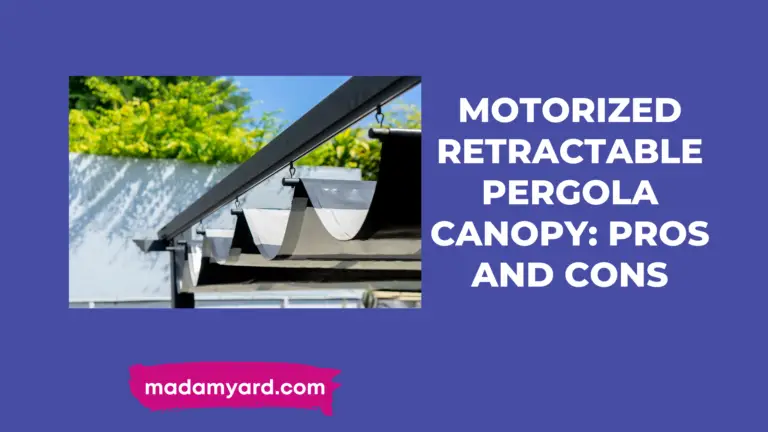How To Remove Walnut Stains From Concrete?
Walnuts are a tasty addition to salads, but they can be a complex problem on concrete driveways and patios. While making delectable sweets may be a fun family pastime, walnuts can leave unsightly stains on concrete surfaces and human skin. So, in this post, I’ll cover how to remove walnut stains from concrete.
Black walnuts, in particular, may leave difficult-to-remove stains on skin and, if left on for an extended period, can cause irritation and burning.
Wearing gloves is essential for preventing stains on hands and other exposed skin. It will prevent discomfort or unattractive discoloration from occurring when gathering or removing walnuts from the affected region.
Before cutting down the walnut tree, attempt to remove the walnut stains. Do not be disheartened; there is one tried-and-true solution that has been suggested repeatedly.

How to Remove Walnut Stains From Concrete
For stain removal, granular chlorine is the only option for homeowners with walnut trees invading their driveway, patio, or concrete area.
Granular chlorine is the same toxin used in swimming pools and is exceedingly caustic and dangerous. It implies consideration will need to be used while utilizing and cleaning the affected region.
Things Required
Protective gloves, protective glasses, rubber boots, a garden hose, granulated chlorine, a spray bottle, a mop bucket, a bristle brush, Dawn dish detergent, and borax are all required to remove walnut stains. When all of those goods have been acquired, the process may begin.
Steps to Remove Walnut Stains from Concrete
Dampen
Start by warming up with biodegradable or rubber gloves or protective glasses for safety.
To begin, wet the stained area thoroughly with the garden hose, sure to cover the whole stain. Overwatering should be avoided. If puddles form, wipe them away or allow them to dry.
Sprinkle the chlorine
Then, using a spray bottle, sprinkle the chlorine granules onto the discolored area. When the chlorine is applied, it should begin working quickly to remove the unpleasant spots. Allow five minutes before contacting the affected region.
Scrub the stained area
Wait for the Dawn dish detergent and borax to dissolve before using the mop bucket to clean the floor. Combine these ingredients well. Scrub the area aggressively when the five minutes are over.
The longer the area is cleaned, the better the results will be. When you are finished, rinse the area to remove any soap or chemicals.
Inspect the area
Once finished, be sure to inspect the area. The stain on a concrete patio should be gone by now. If not, allow the area to dry before trying to remove it again. Repeat this technique until the desired outcome is obtained.
Prevent it from happening again
Remove any remaining stains by applying a layer of concrete sealant. Applying the sealant will make cleaning future stains simpler or maybe prevent them.
Instead of removing the stains, some homeowners choose to take down the troublesome walnut tree to prevent future issues. It is also a possibility, but it may come at a cost.
When removing undesirable trees, it is advisable to hire a professional tree-cutting service to minimize personal harm or damage to neighboring buildings.
Black Walnuts Stains on Concrete
While black walnuts are delicious, they also contain a toxin that is toxic to plants and causes discomfort in people. The shell is not hazardous, but the interior of the walnut, beneath the husk, is where issues might arise.
Juglone, a poisonous toxin found in black walnuts, is produced. This chemical is to blame for the destruction of plants and the occurrence of skin responses in people. It produces the creation of a substance that attaches to the skin and has a dark, nearly black coloration. Contact with black walnuts or the chemical juglone may cause severe scorching, itching, and discomfort.
While there is no evidence of a nut allergy, since it is an irritant, you will not get the allergic response that you would from a bee sting. The actual risk is that the blisters may tear the skin on your hands. It not only makes it complex to do numerous everyday duties, but it also puts you in danger of infection.
Handling Black Walnuts
Wearing gloves while handling black walnuts is the simplest approach to prevent coming into contact with juglone. Disposable gloves are ideal since they are simple to remove, reducing the danger of spreading the juglone to other surfaces. Rubber gloves also work, but they must be carefully washed after use with soapy water to guarantee they are clean.
Black walnut staining is comparable to henna staining. Hands or other portions of the skin may become black where the walnut has been, depending on how long they have been handled. The same is true for outdoor places such as patios.
This coloration is just temporary. It just needs to wear off, which might take a long time. Be cautious of the skin where the walnut has made contact since blisters may develop. These blisters might be unpleasant, but they should be left alone and untreated. If big, painful blisters appear, medical attention may require to prevent infection.
Bottom Line
Due to juglone, a chemical contained in the shell hull, walnuts may discolor concrete. While this molecule is lethal to plants, it only produces slight discomfort in people.
When exposed to the chemical, the skin might become black with pigmentation, like henna, which can be complex to remove. It may also create issues with the removal of concrete or other surfaces.
When gathering cracked or whole walnuts, it is essential to use protective gloves to avoid any uncomfortable or possibly severe side effects of black walnuts. The skin may experience burning, itching, or blistering. If blisters grow big and painful, it is best to seek medical attention to prevent infection.
When dealing with discolored concrete, it’s essential to have all the appropriate equipment, including protective gloves. These will alleviate pain caused by touching black walnuts or the chlorine cleaning chemical.
The only cleaning chemical capable of removing walnut stains from concrete is granular chlorine. Following the instructions step by step should result in total removal. If the stains do not remove, the technique may need to repeat until the desired result is obtained.
While some people choose to scrub away little stains here and there, for others, the issue may eliminate by just removing the tree. It is advised that you hire a professional tree service.







